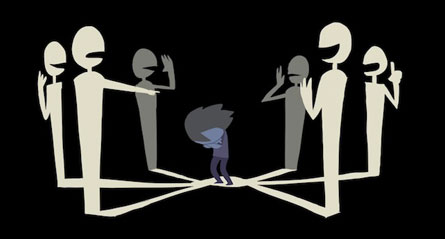Page 1 Page 2

Still from “To This Day”
Human vs. Society
Short film also has a remarkable capacity to take on greater societal problems through the outlook of individuals who face very personal tribulations. In “Jonah,” the protagonist’s journey is expressed through the changing face of the landscape and social structure itself, portraying society’s addictions like greed, gluttony, lust, and avarice. Other films, like last year’s “Addiction,” narrows the lens to reveal a sinister portrait of one middle-class family’s battle with drugs. A quick search on Google and YouTube will uncover a vast selection of films about individual addiction struggle, including Hollywood. Some credit has to be attributed to the latter, which, although often guilty of romanticizing stereotypes about drugs in pop and underground culture, has also made waves in cutting through some of the stigma revolving around the topic. There is still a long way to go, but a small thanks to poignant and honest films which have and continue to push through the taboos, there are now easily accessible rehab programs stretching from Illinois across the US. Partially because of the heroic and reflective portrayals of individuals and their loved ones facing this very troubling social adversary which have reached out to wider audiences, there is a hopeful beginning of progress on the issue. Race, gender, sexual orientation, disability — still emerging, as well, but the presence is there.
Paving the Way for Change
If anything, short film has redefined form; it doesn’t always have to dwell on brooding subject matter or affect change. The elevation of illustration as a serious art form which adults can appreciate owes itself to short film. Poetry has found another venue by driving a melodic and captivating narrative which penetrates the soul when executed, and it doesn’t always have to be clever and witty like Tim Minchin’s hilarious “Storm” but simple and minimalistic. It finds its focus on single, isolated objects more often than majestic landscapes that are truly epic on the big screen, stimulating an attention to detail which the big films don’t always liberate. It can be black and white, in content as well as craft. And the use of silence, dialogue, sound and music is so refined, so raw, and so carefully carved that like every other element of the short film, you feel that not one detail hasn’t been beautifully woven into its tapestry. Out of all the genres, short film is probably the one which is truest to its origins.
The best part is that short film is increasingly accessible, with tons of resources around the web celebrating the gems of its form and offering a venue for aspiring artists as well, and just because the artistic standards are high doesn’t mean that it is off-grounds for the majority of the population, but moreover the belief that art can be rendered from virtually anything makes it a viable venture — or adventure — for virtually everyone, whether produced in one’s backyard or with the help of a university project. And that is why it continues to be such a powerful means of not only expression but serves as the new fable — the best form of communication, not only art, which can help a generation find its voice.
Page 1 Page 2
Pages: 1 2

